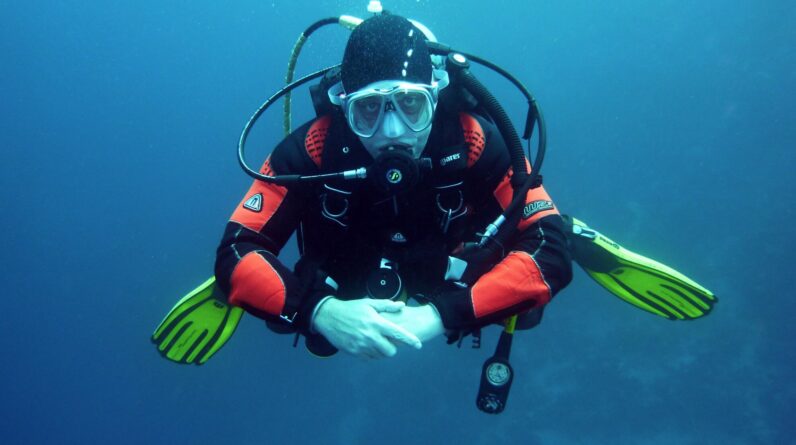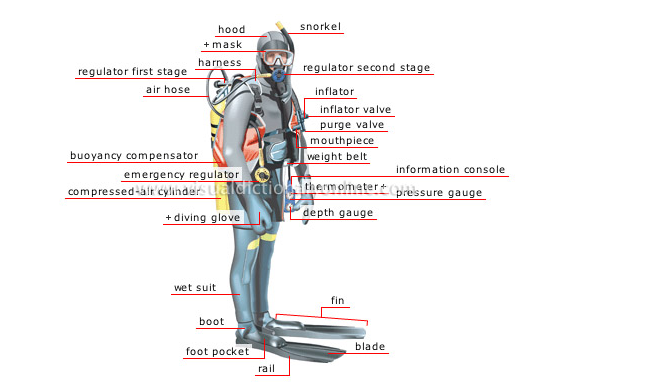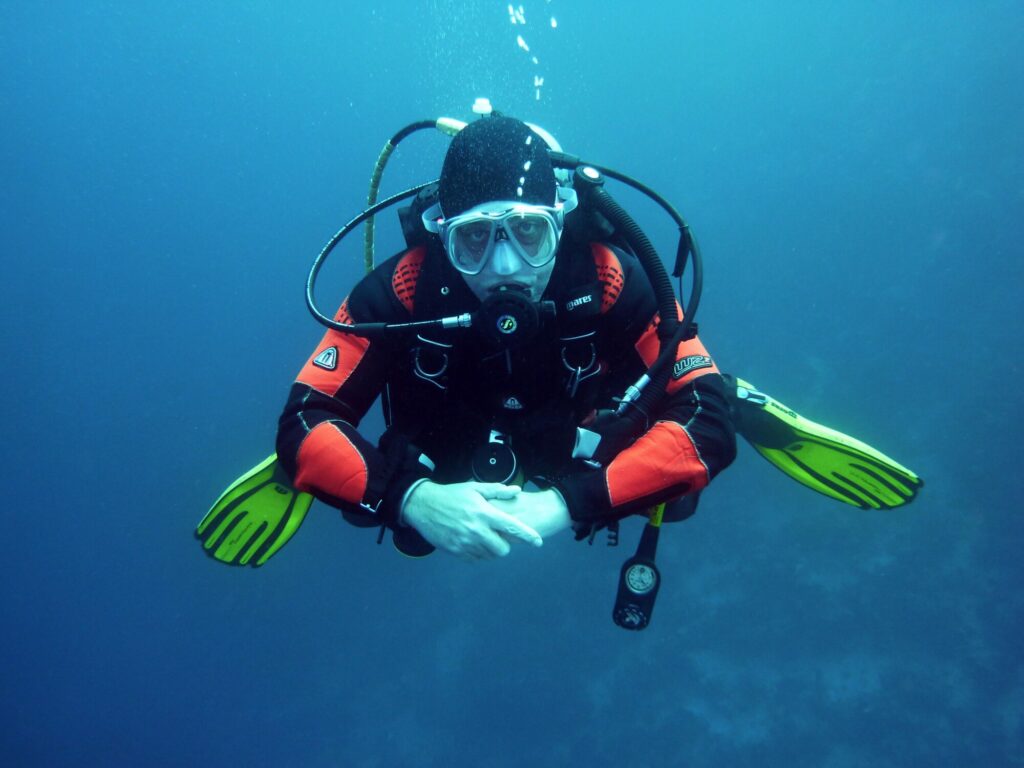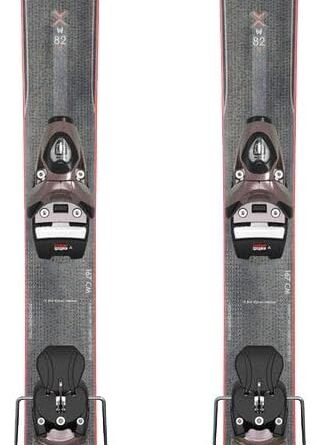
If you’re a scuba diving enthusiast, you know just how important it is to have a quality buoyancy control device (BCD) by your side. But what exactly are the key features that make a BCD truly top-notch? In this article, we will explore the essential aspects to consider when choosing a BCD, from its design and material to its inflation and deflation mechanisms. So, whether you’re a seasoned diver or a beginner looking to invest in your first BCD, read on to gain a deeper understanding of what makes a BCD stand out in the world of scuba diving.
Buoyancy Control Device (BCD) Overview
A Buoyancy Control Device (BCD) is an essential piece of equipment for scuba divers. It plays a crucial role in maintaining buoyancy and controlling descent and ascent while underwater. Understanding the key features of a quality BCD is important for every diver, whether you’re a beginner or an experienced diver looking to upgrade your gear. This article will provide a comprehensive overview of the design, fit and comfort, lift capacity, weight system, inflation and deflation control, harness system, D-rings and attachment points, and storage and organization of BCDs.
Design and Construction
Material
The material used in the construction of a BCD determines its durability, flexibility, and overall performance. Most BCDs are made of durable and lightweight materials such as nylon, which is resistant to abrasion and tear. Some higher-end BCDs may also incorporate reinforced materials, such as Cordura, in areas prone to wear and tear. It is essential to choose a BCD made from high-quality materials to ensure its longevity and performance in various diving conditions.
Stitching and Seams
The stitching and seams of a BCD are crucial for its structural integrity, as they determine how well the various components of the BCD hold together. Look for BCDs with double or triple stitching for added strength and durability. Additionally, consider BCDs with taped or welded seams, as they provide extra reinforcement and prevent water leakage. High-quality stitching and seams are essential to ensure the BCD can withstand the rigors of diving and maintain its reliability over time.
Inflation System
The inflation system of a BCD allows divers to control their buoyancy by providing air to the BCD’s bladder. Most BCDs feature an integrated power inflator, which combines an inflation/deflation mechanism, a low-pressure hose, and an overpressure valve. The power inflator should be easy to access and operate, even while wearing gloves. Consider BCDs with ergonomic inflator designs and intuitive placement for hassle-free buoyancy control.
Dump Valves
Dump valves are essential for quickly releasing excess air from the BCD’s bladder to achieve optimal buoyancy. Look for BCDs with multiple dump valves strategically placed at different locations, such as the shoulder and lower back, to ensure easy access regardless of your diving position. Additionally, consider BCDs with well-designed dump valve mechanisms that are reliable, easy to operate, and provide precise control over the release of air.

This image is property of divingpicks.com.
Fit and Comfort
Sizing Options
A properly fitting BCD is crucial for comfort and safety while diving. BCDs come in a range of sizes to accommodate divers of various body types. It’s essential to find a BCD that offers a wide range of sizing options to ensure a snug and comfortable fit. Proper sizing prevents the BCD from shifting during the dive, avoids unnecessary strain on the diver’s body, and allows for efficient weight distribution.
Adjustability
In addition to sizing options, adjustable features are vital for achieving a personalized fit. Look for BCDs with adjustable shoulder straps, chest straps, and waist belts to customize the fit to your body shape and diving preferences. BCDs with quick-release buckles and easy-to-use adjustment mechanisms make it convenient to fine-tune the fit underwater if needed.
Padding and Cushioning
The padding and cushioning in a BCD play a significant role in providing comfort during extended dive durations. Look for BCDs with ergonomic padding in areas that come into contact with the body, such as the shoulder straps and backplate. Thick, cushioned padding provides added comfort, reduces pressure points, and prevents chafing, allowing you to focus on the dive rather than discomfort.
Lift Capacity
The lift capacity of a BCD refers to the amount of buoyant lift it can provide. It is essential to select a BCD with an adequate lift capacity to ensure it can support your body weight and the additional weight of your scuba gear, tanks, and any diving accessories. The lift capacity needed varies based on factors such as body weight, diving conditions, and the type of diving you do. Consult with a dive professional or refer to the manufacturer’s guidelines to determine the appropriate lift capacity for your needs.

This image is property of scubatechphilippines.com.
Weight System
Integrated Weight Pockets
A weight system in a BCD allows divers to achieve neutral buoyancy by adding and removing weights as needed. Integrated weight pockets are a common feature in BCDs, providing a streamlined and secure way to carry weights. Look for BCDs with easily accessible and secure integrated weight pockets that can accommodate the desired amount of weight. Consider BCDs with quick-release buckles or mechanisms for rapid weight ditching in emergency situations.
Quick Release Mechanism
A reliable and efficient quick release mechanism is essential for safely removing weights in emergency situations or when needing to ascend quickly. Look for BCDs with user-friendly quick release systems that are easy to locate and operate, even in stressful situations. A well-designed quick release mechanism ensures that ditching weights can be done swiftly, helping to maintain safety and stability during the dive.
Inflation and Deflation Control
Inflation Mechanism
The inflation mechanism of a BCD allows divers to add air to the BCD’s bladder and adjust buoyancy. It is crucial to choose a BCD with an inflation mechanism that is responsive and easy to operate. Look for BCDs with inflators that provide precise control over the air flow, allowing for gradual adjustments to buoyancy. Consider BCDs with easily distinguishable buttons or levers for inflation and deflation to prevent confusion underwater.
Overpressure Valve
An overpressure valve is a safety feature in BCDs that prevents bursting or damage to the bladder due to excessive air pressure. Look for BCDs with reliable and well-placed overpressure valves that automatically release excess air when the bladder reaches a certain pressure. This ensures the BCD remains safe and prevents potential damage, providing peace of mind while diving.

This image is property of scubadiverlife.com.
Harness System
Shoulder Straps
The shoulder straps of a BCD are responsible for securing the BCD to the diver’s body and distributing the weight evenly. Look for BCDs with padded and adjustable shoulder straps that provide a comfortable fit and prevent them from digging into your shoulders during long dives. Consider BCDs with sliding shoulder strap adjusters for easy fine-tuning of the fit, ensuring maximum comfort and stability.
Chest Strap
A chest strap is an essential component of a BCD as it helps to hold the shoulder straps securely in place and prevent the BCD from riding up during the dive. Look for BCDs with adjustable chest straps that can be positioned comfortably across your chest, providing additional security and stability while diving. A well-placed and properly adjusted chest strap will keep the BCD secure and prevent unwanted movement during the dive.
Waist Belt
The waist belt of a BCD helps to secure the BCD to the diver’s waist and provides additional support to distribute the weight evenly. Look for BCDs with adjustable and padded waist belts that offer a comfortable fit and prevent them from digging into your waist during long dives. A well-designed waist belt ensures the BCD stays in place and allows for effective weight distribution, enhancing overall comfort and stability.
Backplate and Cummerbund
The backplate and cummerbund of a BCD contribute to its stability and fit. Look for BCDs with rigid and durable backplates that provide support and maintain the shape of the BCD. Consider BCDs with adjustable cummerbunds that can be tightened or loosened to achieve a secure and comfortable fit around the waist. Properly designed and adjusted backplates and cummerbunds ensure the BCD stays in place during the dive, maximizing comfort and stability.
D-Rings and Attachment Points
Number and Placement
D-Rings and attachment points on a BCD are crucial for securing and organizing diving accessories and equipment. Look for BCDs with an optimal number of D-Rings and attachment points strategically placed at various locations. This allows for convenient attachment of items such as dive lights, signaling devices, and cameras. Consider BCDs with additional integrated attachment points, such as hose retainers or knife grommets, for added versatility.
Material and Strength
The material and strength of the D-Rings and attachment points on a BCD determine their durability and load-bearing capacity. Look for BCDs with sturdy and corrosion-resistant D-Rings made from materials such as stainless steel or reinforced plastic. Ensure that the attachment points are securely stitched or reinforced to withstand the weight and forces exerted on them during diving. Strong and reliable D-Rings and attachment points ensure that your gear remains secure throughout the dive.

This image is property of scubaguru.org.
Storage and Organization
Pockets and Compartments
Having sufficient storage options in a BCD allows divers to keep essential items close at hand during a dive. Look for BCDs with large and easily accessible pockets and compartments that can hold items such as dive slates, spare masks, or dive lights. Practical organization features like internal zipper pockets or bungee loops also help to keep things secure and prevent them from shifting or getting lost during the dive.
Knife Attachment Point
A knife is a vital safety tool for any diver, and having a designated attachment point for it on your BCD ensures quick and easy access. Look for BCDs with a secure and convenient attachment point, usually on the waist belt or cummerbund. Ideally, the attachment point should keep the knife in place but still allow for easy release and use when needed. A well-designed knife attachment point ensures that your knife is readily accessible during emergency situations.
Price and Brand
Budget Considerations
When considering a BCD purchase, it’s important to have a budget in mind. BCDs can vary widely in price based on various factors such as brand, features, and materials used. While it’s tempting to go for the most affordable option, remember that investing in a quality BCD can provide better durability, comfort, and performance in the long run. Consider your diving needs, evaluate different BCD options within your budget range, and choose one that offers the best combination of features, quality, and affordability.
Reputable Brands
Choosing a BCD from a reputable brand ensures that you are purchasing a quality product backed by reliable customer support and warranty. Look for BCDs from well-known brands that have a proven track record of manufacturing high-quality scuba diving equipment. Research customer reviews and ask for recommendations from fellow divers or dive professionals to gain insight into the reputation and reliability of different brands. Opting for a reputable brand can provide peace of mind and confidence in your BCD purchase.

This image is property of joyofscubadiving.com.






